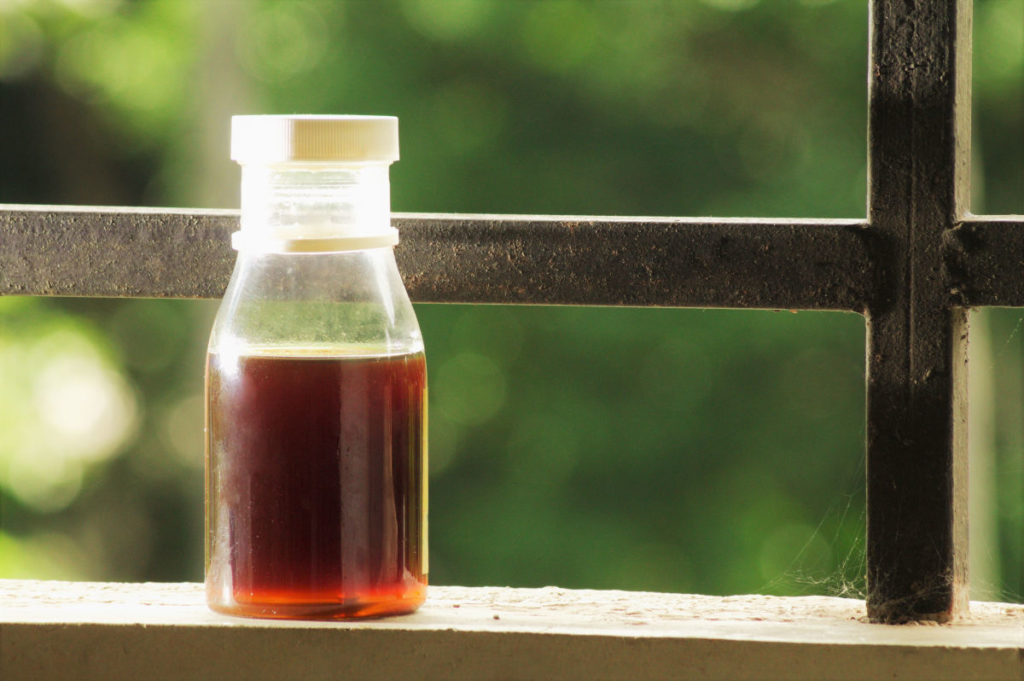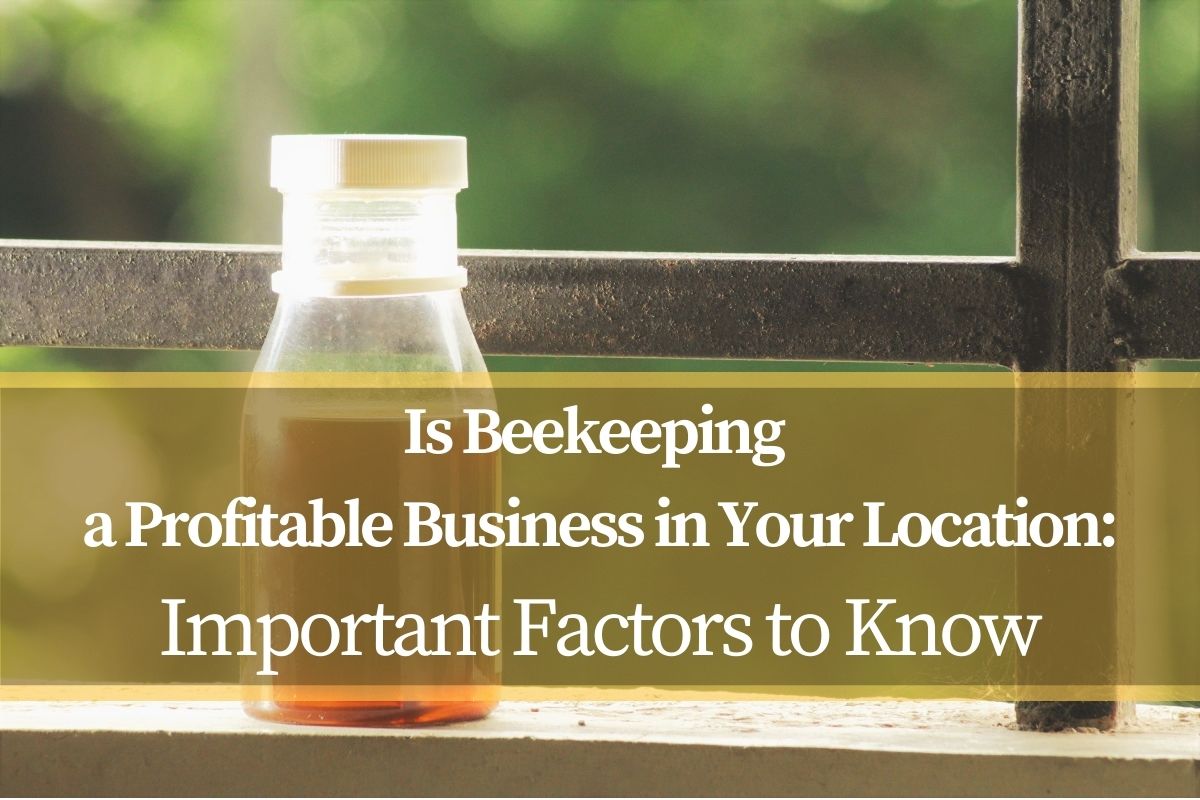You and I might have started on different routes. Some begin beekeeping as a pastime handed over by a previous generation, others serendipitously by a school project or a whole host of origin stories. But because honey bees produce a marketable product, honey, at some point we’ve all wondered if this can be a legitimate business. And as a business, is beekeeping a profitable business?
Beekeeping is a profitable business and a honey bee farm can replace a full-time income of around $40,000. Although this can vary tremendously and it may make sense to keep bees for other reasons. There is certainly a range of potential profit, and the exact amount depends crucially on where you live.
And it’s not just because of your location’s seasonality. Aside from weather and climate, other factors to consider include competition, demand, technology, and so on. The time vs. money tradeoff should also be considered. Break-even point analysis is also key.
This detailed guide will help you determine if starting a honey farm is profitable in your location.
Table of Contents
Beekeeping profitability considerations
The place you live has a huge impact on your honey farm’s profitability. Factors to consider include how many seasons you have and the competition in your area. There’s a vast grey area though, and it’s not as simple as you may think. Would you say it’s more profitable for a beekeeper with one season (i.e., no winter) or four seasons?
With or without winter?
Winter presents a challenge for both the bees and the beekeeper.
We try to ensure our honey bees survive the winter by not over-harvesting, by providing them enough food, and by making sure pests don’t interrupt their slow down. Mice are a common problem. Also know that mice scout their hiding spots before winter, so make sure you prep your hives properly.

There is a risk of losing colonies during the winter.
Not to mention the low supply of pollen and nectar, which cause the low production of honey. But does that mean it’s less profitable in places with extreme winter months? Is beekeeping always less profitable in places with winter? Not exactly.
The increased challenges and difficulties of keeping bees mean there’s less competition. It’s a high-risk high-return tradeoff. There’s a greater chance of losing your honey bees, but if you do survive the winter, it also means supplying the community with a scarce (and in-demand) product.
The point is to check out the competition, regardless of your location’s seasonalities, because profitability will be tied to it.
Business notes on profitability
This section is entirely optional, but I thought it was necessary given the resources I’ve seen. As a corporate finance practitioner, this common oversight stood out to me.
Every beekeeper must understand that “profit” and “revenue” (or “sales”) are two different metrics.
If that was pretty obvious to you, then please feel free to skip to the next section. This quick explanation is to ensure everyone gets it right.
If a hive produces 60 lbs (27 kg) of honey and honey is sold at $5 per pound, then what you get from the hive is 60 lbs x $5 or $300. This is your revenue figure, not your profit. (It is common to confuse this figure with your profit.) Profit is what you get after deducting expenses.
Profit = Revenues – Expenses
“Revenues” and “Sales” are synonymous. Again, “Profit” is what you get after deducting costs. Just making sure we get this important distinction right.
How to price beekeeping products and services
Pricing ties back to our previous point about competition. A monopolistic beekeeper (in an area) will be able to charge more, but there’s always the risk that demand isn’t there, to begin with.
Pricing based on your competition
If you’re the sole producer in your area, you will have some leeway in pricing your products and services. But it is a bit of an arbitrary exercise — you’ll only know if the price is right after you price the product or service.
With competitors around, pricing becomes a bit easier because you basically benchmark against them. Of course, the downside is you’re competing with other suppliers.
Substitute goods
A bulk of your revenues will probably be from the sale of honey. (Although large-scale beekeepers also earn a lot from pollinating services.) It’s easy to see how most beekeepers price their honey to compete with other honey farms. What most forget to consider is the price of substitute goods.
Substitute goods are exactly what they sound like. Instead of honey, for example, consumers may opt for sugar. Here’s OhMyVeggies’ list of honey alternatives you may want to consider when pricing your honey.
Beekeeping products and services
So far we’ve focused on honey. The rationale is this.
If we can make a profit with just honey, which is the bulk of your revenues anyway, then anything else is part of the business’s upside.
If beekeeping is profitable with an analysis of a business that exclusively sells honey, then sales of propolis, beeswax, pollen, and beekeeping services just adds to your profit.
Range of prices for honey
Honey can range from $5 to $20 per pound ($2.27 to $9 per kg). Availability, or lack thereof, demand, consumer purchasing power, season, and many more factors affect the wide range of prices.

Other products and services
For simplicity of our analysis, we will disregard the other income sources of a beekeeper. That said, this does not mean the income from other sources is negligible. Far from it.
A beekeeper’s earnings from propolis, beeswax, and products that use beeswax (e.g., candles, lip balm, creams), pollen, and services (e.g., classes or courses, bee removal service, pollination) may account for a significant portion of income.
But for the beginning backyard beekeeper who’ll probably focus on honey, we’ll consider these supplemental products and services our upside potential.
Determining start-up costs and operating costs
There’s a recurring theme here about location. Costs, both start-up and monthly operating costs, will depend on where you live.
Fortunately, online platforms like Amazon are standardizing some of the costs and are making virtually all tools and equipment accessible anywhere.
Here’s the rule of thumb we use in the beekeeping industry:
Budget around $500 for one hive. A little less than double for 2 hives.
Keep in mind that a lot of the costs are one-time expenses such as the hive tool, smoker, and bee suit. When getting 2 hives (and it is recommended that you get at least 2 hives to start with), you’re really just paying for the package of bees or nuc. (Refer to this article on Wikipedia to understand what a nuc, short for nucleus colonies, is.)
And also to keep the relevance of this post, I’ve opted not to include specific prices. For the latest in beekeeping tools, supplies, and equipment, see our Resources page or check them out on Amazon. (This link forwards you to the Beekeeping Supplies section on Amazon.) Make sure you check the landed costs to your place.
Know your break-even point
The break-even point is the sales volume or amount where you neither gain nor lose money. In other words, profit is zero.
It is important to know your break-even point because it’s also the point where you then start to make a profit.
Anything sold after your break-even point is essentially profit.
Break-even point formula
The break-even point is derived with the following formula:
BEP = Fixed Costs / (Price – Variable Costs)
Where:
- BEP = break-even point in units
- Fixed costs = monthly costs that don’t change regardless of the number of units sold; may include the salary of your hired help, rent, if you’re renting your space, or marketing costs
- Variable costs = monthly costs that move with the number of products sold; may include the cost of bottles used to store honey, stickers, etc.
Break-even point example
The numbers used in this example are hypothetical and may differ substantially from what you might observe in your area. Please adjust your figures accordingly.
Let’s pretend your total fixed costs are $1,000. If you sell a pound of honey at $5, and each pound of honey costs you $1 to sell (packaging, transportation, etc.), then your break-even point is computed as:
BEP = $1,000 / ($5 - $1)
BEP = 250This means you’ll have to sell at least 250 lbs of honey. Selling the 251st pound, and beyond, means your beekeeping practice is profiting. Let’s check our math at 250 lbs sold.
@ 250 lbs:
Sales = 250 lbs x $5/lb
Sales = $1,250
Total Costs = Fixed Costs + Variable Costs
--Fixed Costs = $1,000
--Variable Costs = 250 lbs x $1/lb = $250
Total Costs = $1,250
Total Profit = Sales - Total Costs = $1,250 - $1,250 = 0At 250 lbs, profit is zero. So in other words, selling 250 lbs of honey is our break-even point. Your business earns a profit for every pound of honey sold over 250 lbs.
Just for re-emphasis, this is a hypothetical example and doesn’t mean you have to sell 250 lbs of honey. For instance, your fixed costs are probably going to be a lot lower than $1,000 and, given the break-even point formula, means you’ll have a lower break-even point and profit faster.
Scaling a profitable beekeeping business
The recommended starting point for most backyard beekeepers is 2 colonies. It is also widely accepted that you’ll probably not make a profit in your first year of operations.
Is this a turnoff for business-minded beekeepers? Not really.
Gradual scaling
Almost all businesses start out with a loss. Some businesses scale faster, while others lag a little bit. Because of honey farming’s highly seasonal nature (i.e., you only harvest once or twice a year), most beekeepers scale slowly. It’s an annual cycle and you can only apply what you’ve learned the next year.
This isn’t an issue though because slow or fast scaling is a wash. A business that earns right away, at time zero, will attract competition due to its low barriers to entry. The increased competition will lower your profit margins (because you’re forced to lower your prices at the same costs to make them).
That is one of the tradeoffs in businesses and this case isn’t unique to beekeeping.
The time vs. money puzzle
Another tradeoff in business is the time vs. money conundrum.
For example, you could skip on buying a honey extractor and save $150 to $300 (see Amazon’s list of honey extractors). The cost savings mean you’ll need to sell less honey before recovering your investment.
But honey extractors also save you time. This is particularly true as you get more and more hives to harvest.
Do you shell out for the extractor, or do you use manual labor? What type of extractor works best? The time vs. money tradeoff is one you’ll have to consistently keep in mind as you scale up.
At what point do you scale?
We now know there’s a tradeoff between time and money. This ties in perfectly to knowing when to scale.
Taking care of 2 hives takes approximately 26 hours a year. With shared tasks considered, that is approximately 30 minutes per hive every 2 weeks.
(Shared tasks are tasks that you do once, rather than per hive. An example is the preparation of your equipment. See How Much Time Does Beekeeping Take: Easy Guidelines To Remember for more details.)
Assuming you can tend to 20 hives a day, for 5 days a week, then that’s 100 hives a week. Since we check on our honey bees every other week, a full-time beekeeper should be able to manage over 200 hives, with part-time help hired during the harvest season.
With more experience, improved efficiency, and maybe a little bit of help, this can certainly go up to 400 or 500 hives for one beekeeper.
For really large honey farms, adding more hives can only be possible by hiring full-time employees. But remember that hiring full-time employees adds to your fixed costs, and thus increases your break-even point. (Review the break-even point formula above). To ensure your beekeeping business remains profitable, make sure the additional employees bring in more value than they cost.
Estimating profit in beekeeping
The amount of honey you can harvest per hive varies and will depend on many factors. In fact, it’ll probably range from 20 lbs to 100 lbs (9.1 kg to 45.4 kg). From our experience, 40 lbs to 60 lbs (18.1 kg to 27.2 kg) per hive is a reasonable assumption. Let’s use the mid-point to estimate the profit of a full-time beekeeper.
At 50 lbs of honey, our low-end price assumption of $5 per pound, and 200 hives for the solo beekeeper, that’s approximately $50,000 in revenues. (50 lbs x $5/lb x 200 hives = $50,000)
At our assumed variable cost of $1 per pound, that’s $1/lb x 50 lbs x 200 hives = $10,000.
The estimated profit of our hypothetical beekeeper is $40,000.
Profit = Revenues - Costs
Profit = $50,000 - $10,000
Profit = $40,000Again, this is a hypothetical case. Use the numbers (price, cost, number of hives) that make sense to you to determine your estimated profit or loss.
Small-scale beekeeping can make sense
Now, you might be wondering if it’s worth the hassle. If you’re anything like most starting beekeepers, you’d like to have maybe a couple of hives and nothing more. If you aren’t able to scale then, does it mean it’s a waste of time? Absolutely not!
Hobby with potential to earn
Not many hobbies can claim the potential of earning a few bucks. Certainly not my other hobbies photography and biking.
Watching over a colony of honey bees is relaxing and, dare I say, therapeutic. But you already know that.
Sure, it can be a challenge to turn into a profitable business. There are too many variables to consider and the scale to really make a significant income can be daunting for most hobbyists.
But it’s unquestionably a hobby that can pay for itself.
Existing plantation
If you have an existing plantation of apples, carrots, beets, and so many more, then introducing a beehive is a no-brainer. You should definitely get at least a couple.
(See this Wikipedia list of crop plants pollinated by bees.)
The increase in crop productivity due to pollination is huge. In a pollination experiment by W.R. Roach Company Orchards (the results of which I got from Howland Blackiston’s book, Beekeeping for Dummies), the production of apple trees with and without nets to block off the bees was compared.
Here are the results:
- Without honey bees: 25 apples per tree
- With honey bees: 1,200 apples per tree
Let me say that again:
From 25 apples per tree to 1,200 apples per tree!

You can see why it makes sense to keep bees with an existing farm or garden.
Conclusion: Is beekeeping a profitable business
Beekeeping can be a profitable business. But the circumstances have to be right and you’ll have to be willing to put the time in. That isn’t entirely different from any other business venture though. The more time you put into it, the greater the chance of having a profitable beekeeping business. Earning $40,000 a year from your honey farm is possible, not to mention the supplementary products and services you can provide with beekeeping.
My recommendation is to start small and scale when you think it’s time. There are no shortcuts to gaining experience and knowledge. Again, that isn’t different from other business ventures. Have a lookout on your competition, direct and indirect, and see if scaling up makes sense.
Beekeeping can be a hobby that pays for itself or a profitable full-time business that’s scalable. Your location plays a huge part in profitability, but in the end, no one honestly knows for sure. Like all businesses, all you can really do is your due diligence. Whether or not you take the risk is a decision you’ll have to make.

Honey Farm Starter documents our journey from novices to (hopefully) experts. If you’re feeling a bit intimated by all big words and don’t know where to start, this place is for you. We are Dan & Deanne, and our hope is to create a resource that’s as encouraging as possible for the everyday backyard beekeeper.

